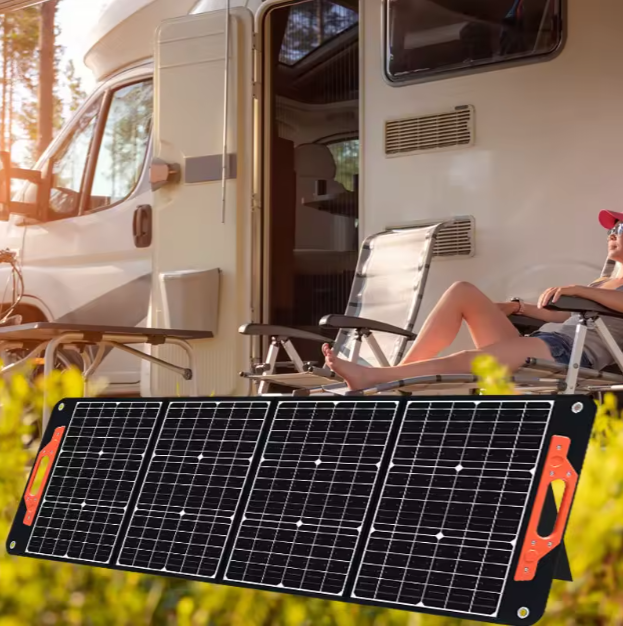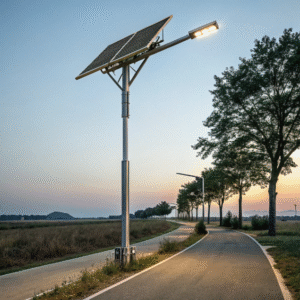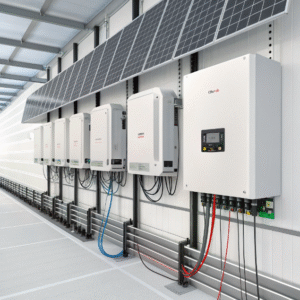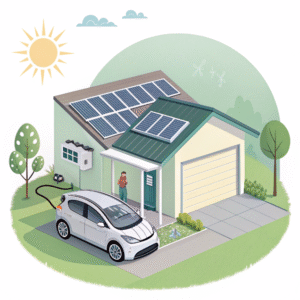Grid Down, Phone Dead: The First 72 Hours After a Storm & Why a Foldable Panel is Your Lifeline
When the power grid fails after a storm, your phone becomes a useless brick within hours. Panic sets in as communication dies. A portable, foldable solar panel1 isn't just a gadget; it's your direct line to safety, information, and peace of mind when everything else fails.
A foldable solar panel provides critical power in a grid-down scenario2, enabling communication, access to information, and device charging. Its portability and rapid deployment make it an essential lifeline during the first 72 hours of an emergency, when centralized aid is often unavailable.

The immediate aftermath of a disaster is a race against time. While traditional preparedness focuses on food and water, the ability to power a phone or radio can mean the difference between isolation and rescue. Let's explore why this simple technology is your most crucial asset.
The "Engineer-Free" Power Kit: How Aid Organizations Deploy Panel, Battery & Inverter in Under 15 Minutes?
Aid workers face chaos after a disaster. They don't have time for complex setups; they need power, now.
Aid organizations use integrated "power kits" featuring a foldable solar panel, a power station3 (battery/inverter), and pre-connected cables. This allows non-technical personnel to generate AC and DC power in under 15 minutes, bypassing damaged infrastructure to run comms and medical equipment.
The Anatomy of a Rapid-Deployment Kit
The efficiency lies in the pre-configuration. These kits are designed for simplicity, eliminating the need for engineering expertise when time is critical. The components are chosen for durability and interoperability.
- The Panel: High-wattage, ruggedized foldable panels that can be laid on the ground or hung from a vehicle.
- The Power Station: An all-in-one unit containing a lithium battery, pure sine wave inverter, and multiple ports (USB, 12V, AC). It's the heart of the system.
- The Connection: Weatherproof cables that are often permanently attached or use foolproof connectors like Anderson Powerpoles.
This approach is a lesson for personal preparedness. Your emergency kit should be just as simple.
| Kit Component | Aid Organization Spec | Personal Preparedness Equivalent |
|---|---|---|
| Solar Panel | 100W-200W, ETFE coating, waterproof | 60W-100W foldable panel, robust build |
| Power Station | 500Wh-1000Wh, multiple output options | 300Wh-500Wh power station (Jackery, EcoFlow, etc.) |
| Deployment Time | < 15 minutes by untrained personnel | < 5 minutes for a single user |
The goal is the same: to create a self-sufficient micro-grid4. By adopting this "kit" mentality, you ensure that when stress levels are high, your ability to get power remains low-effort and highly reliable.
ETFE vs. PET: The Coating That Determines if Your Foldable Panel Lasts 1 Year or 7 Years in the Tropical Sun?
You buy a solar panel for emergencies, but will it work when you need it most? The secret isn't the solar cells—it's the plastic layer protecting them.
The protective coating on a solar panel is critical for longevity. ETFE (Ethylene Tetrafluoroethylene) is a high-performance polymer offering superior UV resistance and durability, often lasting 5-7 years. PET (Polyethylene Terephthalate) is a standard plastic that degrades quickly, typically turning yellow and brittle within 1-2 years under intense sun.
Why the Coating is a Make-or-Break Feature
This isn't a minor difference; it's the defining factor between a disposable product and a long-term investment. UV radiation is the primary enemy of plastics, causing embrittlement and clouding (which reduces light transmission to the cells).
- ETFE (The Premium Choice): Think of it as the non-stick coating of the solar world. It’s highly resistant to UV degradation, chemical corrosion, and extreme temperatures. Panels with ETFE are often rated for 10,000+ hours of UV exposure. They remain flexible and clear for years.
- PET (The Budget Option): This is the same plastic used in water bottles. It offers minimal UV protection. Under direct sun, it will quickly yellow, significantly reducing the panel's efficiency until it becomes virtually useless.
The choice is simple: pay more upfront for ETFE and have a reliable asset for years, or buy a cheaper PET-coated panel and risk it failing when a crisis hits.
| Coating Type | Expected Lifespan (Full Sun) | Key Characteristics | Best For |
|---|---|---|---|
| ETFE | 5-7+ years | Excellent UV resistance, remains flexible, high light transmission | Long-term preparedness, harsh environments |
| PET | 1-2 years | Low UV resistance, yellows and becomes brittle quickly | Short-term, occasional use (e.g., camping) |
Always check the product specifications. If the coating isn't listed, it's almost certainly PET. For a lifeline you can trust, insist on ETFE.
From One Box to a Full Pallet: Why Our Compact Foldable Panels Cut Your Shipping & Storage Costs by 70%
Logistics win emergencies. Bulky, heavy equipment is slow to deploy and expensive to store. What if your power source could fit in a backpack?
Compact foldable panels dramatically reduce logistical footprints. A 100W panel that folds to the size of a laptop binder replaces a rigid panel requiring a large, heavy case. This efficiency cuts shipping costs, maximizes storage space, and enables faster distribution at scale, whether for a family or an entire relief operation.
The Ripple Effect of a Smaller Footprint
The benefits of a compact design extend far beyond mere convenience. For aid organizations and preppers alike, space and weight are premium currencies.
- For Aid Organizations: Shipping costs are calculated by volume and weight (volumetric weight). A pallet of compact panels can hold 3-4x the power capacity of a pallet of rigid panels. This means more power can be sent to a disaster zone faster and for less money. Storage in regional warehouses is also cheaper and more efficient.
- For Individuals and Communities: A compact panel can be stored in a car trunk, under a bed, or in a bug-out bag. It doesn't require dedicated shelf space like a rigid panel. This encourages people to actually keep it accessible rather than buried in a garage.
This logistical advantage is a force multiplier. It means you can have more backup power reserves on hand without the spatial penalty, making comprehensive preparedness a realistic goal for more people.
| Scenario | Rigid Panel Challenge | Foldable Panel Advantage |
|---|---|---|
| Shipping 1,000 Watts | 4x large, heavy boxes; high freight cost | 2x small, flat packages; significantly lower cost |
| Storage (Home) | Requires a garage shelf or wall mount | Fits in a closet, drawer, or emergency kit bag |
| Deployment | Two-person job, awkward to transport | One-person job, highly portable |
In a crisis, agility is survival. A compact, foldable power solution provides that agility from your storage room to the front lines of a disaster response.
Conclusion
In the critical 72 hours after a storm, a durable, rapidly deployable foldable solar panel is not a luxury—it's your essential lifeline for communication, safety, and resilience.
Explore how foldable solar panels can provide essential power during emergencies, ensuring communication and safety. ↩
Learn effective strategies for managing power and communication when the grid fails. ↩
Understand the role of power stations in providing reliable energy during power outages. ↩
Learn about the concept of self-sufficient micro-grids and their importance in emergencies. ↩



